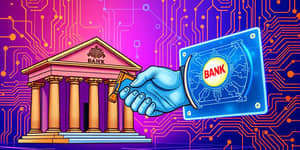In a world where financial technology evolves at breakneck speed, digital banking has emerged as a powerful force reshaping how we manage money, invest our resources, and plan for the future. By 2025, over digital financial empowerment for all is becoming a reality for millions across the globe.
Rapid Growth and Widespread Adoption
Digital banking adoption surged dramatically in recent years, with more than 216.8 million Americans using mobile and online services in 2025 and over 3.6 billion global users. Transactions via digital wallets topped $10 trillion in 2024, reflecting a fundamental shift away from cash and traditional in-branch visits.
Today, 55% of Americans prefer banking on mobile devices, while 91% rank digital capabilities as a top factor in choosing a bank. This movement signals a new era where convenience, accessibility, and speed define the customer journey.
Neobanks: Redefining Banking Norms
Neobanks, or digital-only banks, are leading the charge with mobile-first strategies that prioritize user experience over physical footprint. Without the costs associated with brick-and-mortar branches, neobanks pass savings directly to customers through reduced fees and competitive interest rates.
Fueled by intuitive app designs and instant onboarding processes, these institutions challenge legacy players to innovate rapidly or partner with fintech startups. For tech-savvy consumers, neobanks offer highly personalized customer experiences that feel more like a lifestyle tool than a financial service.
AI-Driven Personalization and Proactive Services
Artificial intelligence is becoming the backbone of modern banking platforms. By analyzing user behavior, spending patterns, and financial goals, AI systems deliver tailored recommendations—from optimized savings plans to investment opportunities aligned with risk tolerance.
Proactive alerts, real-time budgeting assistance, and automated wealth management solutions are just a few examples of how institutions can anticipate needs before customers even realize them. This shift towards predictive engagement strengthens loyalty and builds deeper, more trusted relationships.
Invisible and Embedded Banking
Imagine a world where financial services blend seamlessly into your daily routine, accessible through voice assistants, smart appliances, or even your car’s dashboard. Invisible banking embeds transactions and account insights within non-banking platforms to minimize friction and amplify convenience.
From paying bills while cooking dinner to receiving instant credit offers via virtual agents, banks are ushering in seamless everyday financial interactions that feel natural and unobtrusive, giving customers more control over their finances without extra effort.
Hyperautomation and Low-Code Innovation
Combining robotic process automation (RPA) with machine learning, hyperautomation accelerates tasks like data entry, document verification, and customer onboarding. The result is faster, error-free operations that free teams to focus on strategic initiatives.
Low-code development platforms further democratize innovation, enabling business and IT teams to collaborate on new features without extensive coding expertise. This approach reduces time-to-market and fosters a culture of continuous experimentation and improvement through end-to-end process automation solutions.
- Faster deployment of custom applications
- Reduced operational costs and manual errors
- Increased scalability and adaptability
Blockchain and Decentralized Finance
Blockchain technology is transitioning from experimental to essential, as banks explore its potential for cross-border payments, smart contracts, and tokenized asset management. Decentralized finance (DeFi) platforms offer alternatives that bypass intermediaries, lowering costs and expanding access.
While mainstream integration is still evolving, pilot projects demonstrate how secure transparent digital ledger systems can enhance compliance, reduce fraud, and streamline settlement processes—laying groundwork for a future where digital currencies merge with traditional banking rails.
Elevating Customer Experience and UX Trends
Customer expectations continue to rise, driving banks to invest heavily in user interface design, personalization engines, and responsive support channels. Key trends for 2025 include:
- Customizable Banking: Personalized dashboards and goal-setting tools
- Connected Banking: Consistent experiences across devices and platforms
- Live Banking: Instant support via chat, video, or AI agents
- Contextual Banking: Offers tailored to real-time user context
- Social and Green Banking: Community engagement and eco-friendly products
By aligning services with evolving lifestyles, banks can foster a sense of partnership and shared purpose with their customers.
Digital versus Traditional Banks: A Comparative Table
As competition intensifies, understanding the strengths and trade-offs of different models becomes crucial. The table below highlights how digital-only and traditional banks stack up:
Digital banks excel at offering cost-effective and agile financial services, while traditional banks leverage their trusted reputation and broad product portfolios.
Preparing for the Future of Banking
Looking ahead, generative AI, further automation, and evolving regulations will continue to shape digital banking’s trajectory. Institutions that prioritize agile development, robust data security, and transparent communication will outpace competitors and earn lasting customer trust.
Whether you are a banking executive, fintech entrepreneur, or everyday consumer, now is the time to embrace change, collaborate across industries, and invest in the tools that drive innovation. By embracing continuous innovation and growth, the financial sector can deliver on its promise of a more inclusive, efficient, and customer-centric future.
References
- https://www.firstbank.com/resources/learning-center/top-banking-trends-to-watch-in-2025/
- https://www.accenture.com/us-en/insights/banking/top-10-trends-banking-2025
- https://theuxda.com/blog/7-digital-banking-trends-to-elevate-financial-brands-in-2025
- https://www.americanbanker.com/news/the-rise-of-the-invisible-bank
- https://kissflow.com/solutions/banking/banking-technologies/
- https://fortunly.com/statistics/online-mobile-banking-statistics/
- https://www.synchrony.com/blog/banking/online-vs-traditional-banks
- https://www.forrester.com/blogs/2025-the-digital-banking-landscape-is-poised-for-another-transformative-year/










